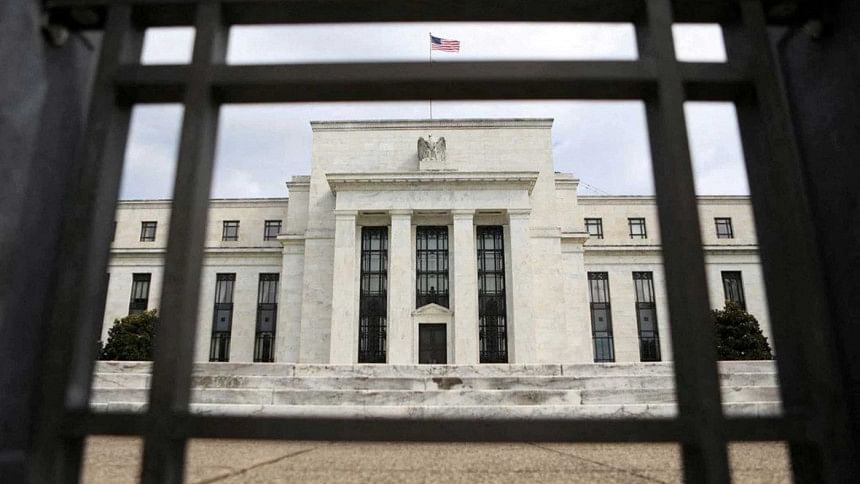How will interest rate hikes by the Fed affect Asia?

Rising interest rates by the United States Federal Reserve and other central banks around the world could have a significant impact on Asia.
ADB economists answer questions about the impact on Asia of rising interest rates, based on their research for the Asian Development Outlook 2022 Update.
WHY DO CENTRAL BANKS, LIKE THE FED, RAISE INTEREST RATES?
Central banks raise interest rates to curb accelerating inflation and safeguard price stability. The higher interest rate set by the central bank pushes up the lower limit for lending rates to firms and households, disincentivising their consumption and investment. In turn, this reduces aggregate demand in the economy, thus lowering inflationary pressures. The policy rate set by the central bank thus acts as a fulcrum for the other interest rates.
Most recently, the United States Federal Reserve, often called the Fed, and other central banks started raising interest rates in response to soaring domestic inflation. In the US, low-interest rates and increased government spending in response to the pandemic resulted in a sharp demand recovery and a tightening labour market last year, compounding the inflationary effects of supply chain disruptions. Russia's invasion of Ukraine further increased inflation by raising energy and food prices.
The Fed hiked interest rates in July 2022 for the fourth consecutive time. This is its most aggressive hiking cycle since 1981, which has already pushed borrowing costs to the highest level since 2019. Inflation eased slightly in July but the decline seems not compelling enough for the Fed to loosen its reins. Indeed, Chairman Jerome Powell has since pushed back against the idea that the Fed may soon pivot toward a less aggressive policy. As such, the federal funds rate is expected to continue rising, especially with recently released core inflation numbers. Similarly, the European Central Bank also raised interest rates in July and September.
WHAT DO RISING INTEREST RATES MEAN FOR ASIAN ECONOMIES?
Rising interest rates shrink global liquidity, which may slow Asia's recovery in several ways. For businesses, a tighter credit environment results in higher borrowing costs, reducing their profitability and investment incentives. As borrowing costs rise, households are also less inclined to spend, especially on durable goods and houses. Softening demand and weaker global growth pose challenges for Asian manufacturing and exports.
Monetary tightening in the US has led to investors pulling their money out of Asian economies, triggering currency depreciation in most of the economies. Sharp currency depreciation generally increases inflationary pressures through higher import prices of food and energy, worsens the current account balance, and may thus result in countries having difficulty with paying for their essential imports or servicing external debts.
Policymakers in the region must remain cautious and vigilant, particularly where high, or fast-increasing debt burdens are amplifying economic and financial vulnerabilities. Economies with higher dependency on external creditors in dollar-denominated debt are already experiencing rising servicing costs and cash shortfalls.
WHAT WILL BE THE CONSEQUENCES FOR ASIA IF THE FED CONTINUES TO RAISE RATES?
Periods of tightening US monetary policy are generally associated with higher financial volatility, capital outflows, and currency depreciation in emerging economies. This is especially the case when tightening is sharper than expected, as it was in June. Concurrently, many central banks in the region started raising rates to combat rising inflation, stem capital outflows and smooth exchange rate fluctuations—but this may slow economic recovery.
This shows that higher inflation associated with increases in commodity prices poses complex challenges to monetary policymakers, forcing them to wrestle with the two conflicting objectives of price stability and higher growth. Given the largely incomplete economic recovery from the Covid-19 crisis, these challenges are currently acute in most of Asia's developing economies. Central banks in the region should remain vigilant and act promptly to forestall persistent rises in inflation, which could not only jeopardise the objective of price stability but, ultimately, also slow down the recovery.
HOW DO RISING INTEREST RATES AFFECT THE POOR IN ASIA AND THE PACIFIC?
Developing countries in Asia will not be immune to spillovers from monetary tightening in the US and other major economies, but the region is well-placed to weather the consequences. Over the past few decades, and especially since the Asian Financial Crisis, most regional economies have adopted prudent macroeconomic policies, including flexible exchange rates to deal with external shocks, active monetary policy to contain inflation, and measured fiscal policy to keep public debts within reasonable and sustainable levels. These measures, along with continuing efforts to strengthen the social security system, will be critical in the months and years ahead.
The authors are economists of the Asian Development Bank.

 For all latest news, follow The Daily Star's Google News channel.
For all latest news, follow The Daily Star's Google News channel. 



Comments